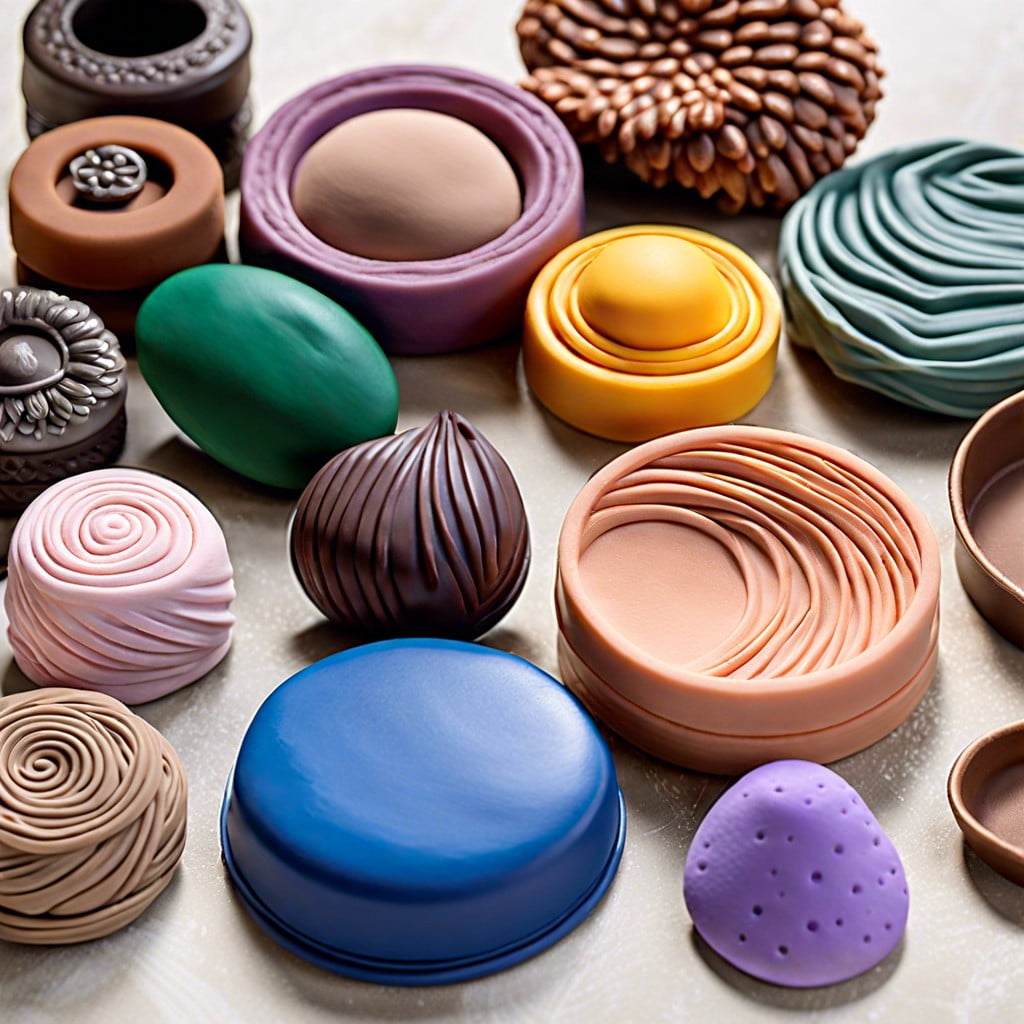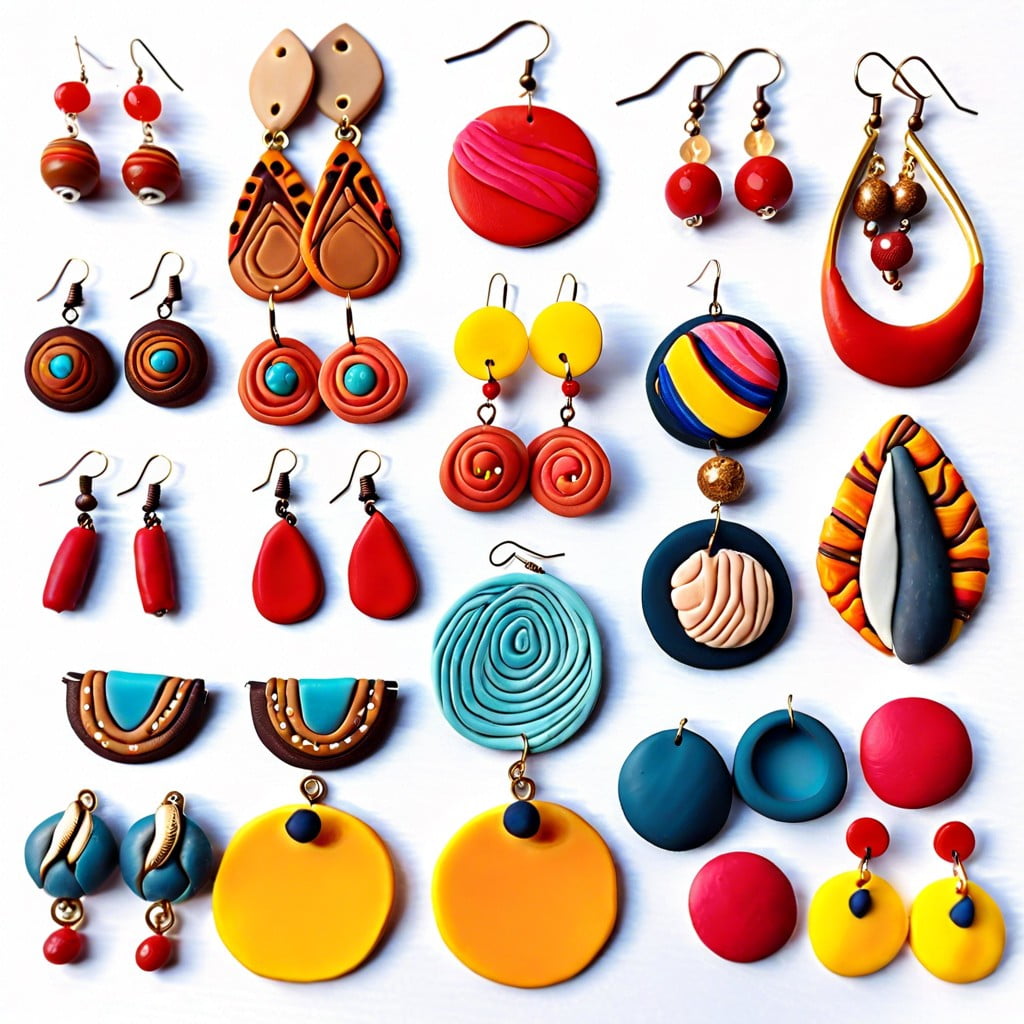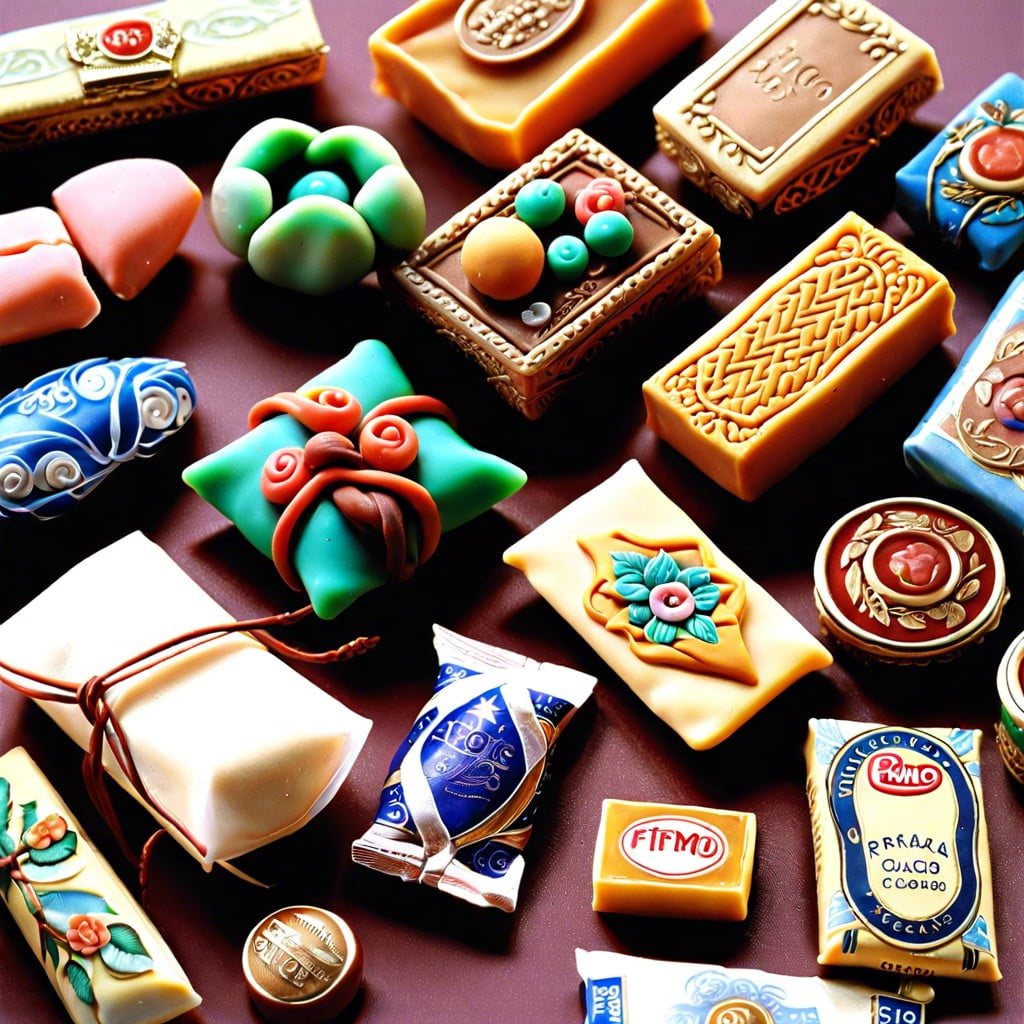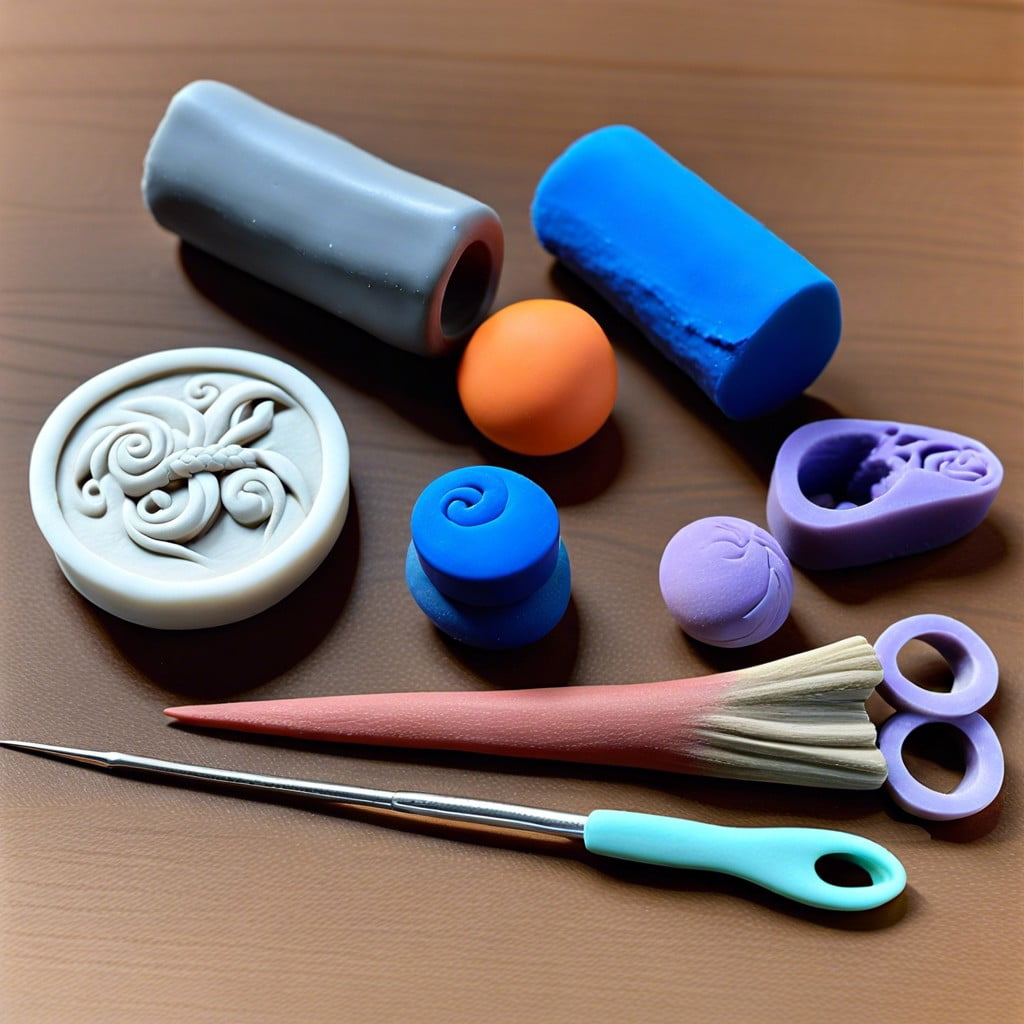Exploring the world of polymer clays is an exciting venture because these versatile materials open up limitless possibilities in construction and DIY projects.
Embarking on a new polymer clay project sparks the excitement of creation, but the foundation of any masterpiece is choosing the right material. Whether you yearn to sculpt intricate figurines or craft bespoke jewelry, selecting the best polymer clay is pivotal.
Factors such as malleability, finish, strength, curing temperature, and color diversity will guide you to the clay that not only molds to your artistic will but also stands the test of time.
In this guide, we’ll delve into each attribute, ensuring you can confidently select a polymer clay that elevates your craft to new heights, allowing your creativity to flourish without bounds.
Key takeaways:
- Malleability is key: Softness and ease of conditioning vary among clays.
- Consider the finish: Matte, satin, or glossy options are available.
- Strength matters: Choose a clay that matches the intended use.
- Check the curing temperature: Make sure your oven can handle it.
- Look for color options: Some brands offer a wide range of vibrant colors.
What You Will Learn
Factors to Consider When Choosing Polymer Clay
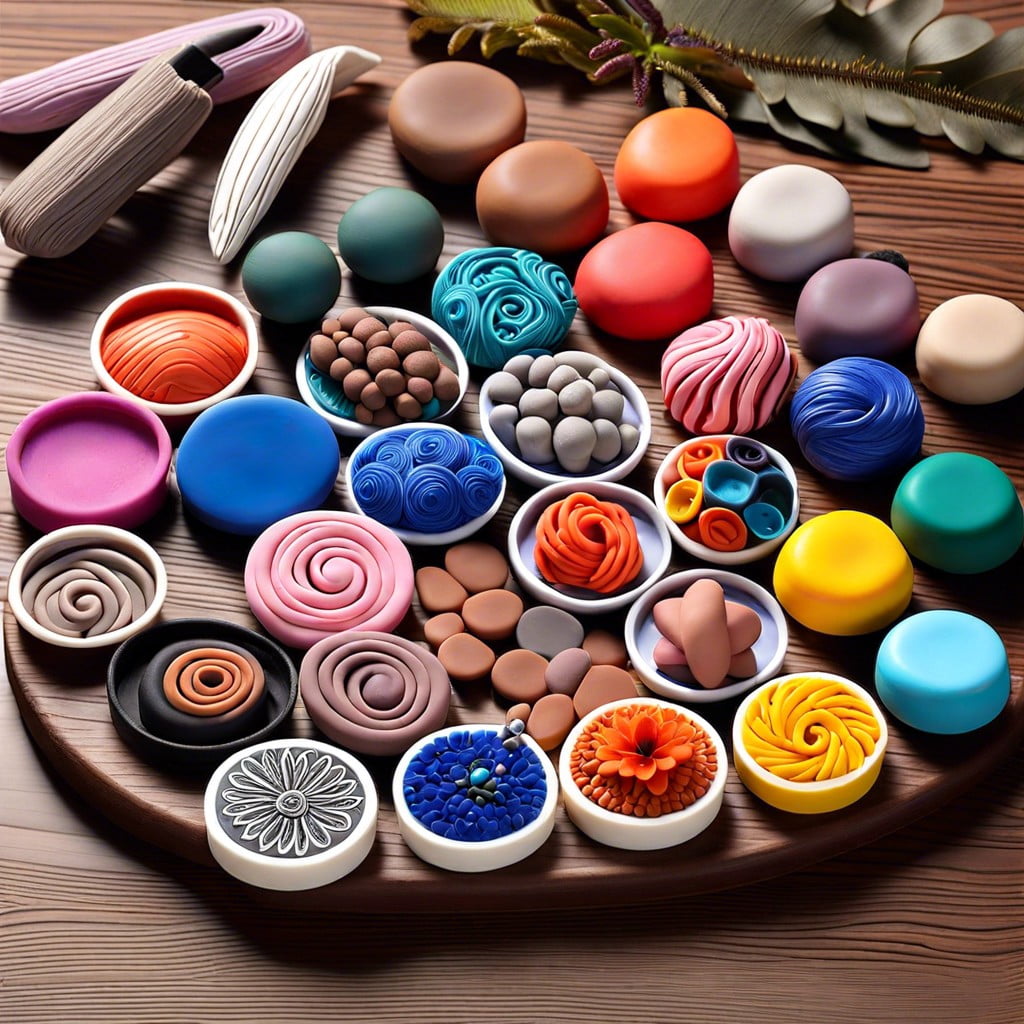
When selecting the right polymer clay for your project, consider the following key aspects:
Malleability: Clays differ in softness and ease of conditioning. Soft clays are ideal for beginners, while firmer varieties may offer more detail for advanced sculptors.
Finish: Clays can have a matte, satin, or glossy finish after baking. Some projects may require a specific surface finish if no post-baking treatment is planned.
Strength: The intended use of your creation dictates the necessary strength. Delicate pieces may require a clay that bakes to a strong finish.
Curing Temperature: Ensure that you can safely and accurately bake your clay at its recommended temperature. Check your oven’s capabilities before committing to a brand.
Available Colors: Some brands offer a wider palette or more vibrant colors, reducing the need for mixing or painting after baking.
Special Requirements: If your work involves thin pieces or you want to incorporate mixed media, look for polymer clays designed for these specific conditions.
Keep these factors in mind, and you’ll be better equipped to pick a polymer clay that meets the demands of your creative endeavors.
Comparison of Polymer Clay Brands
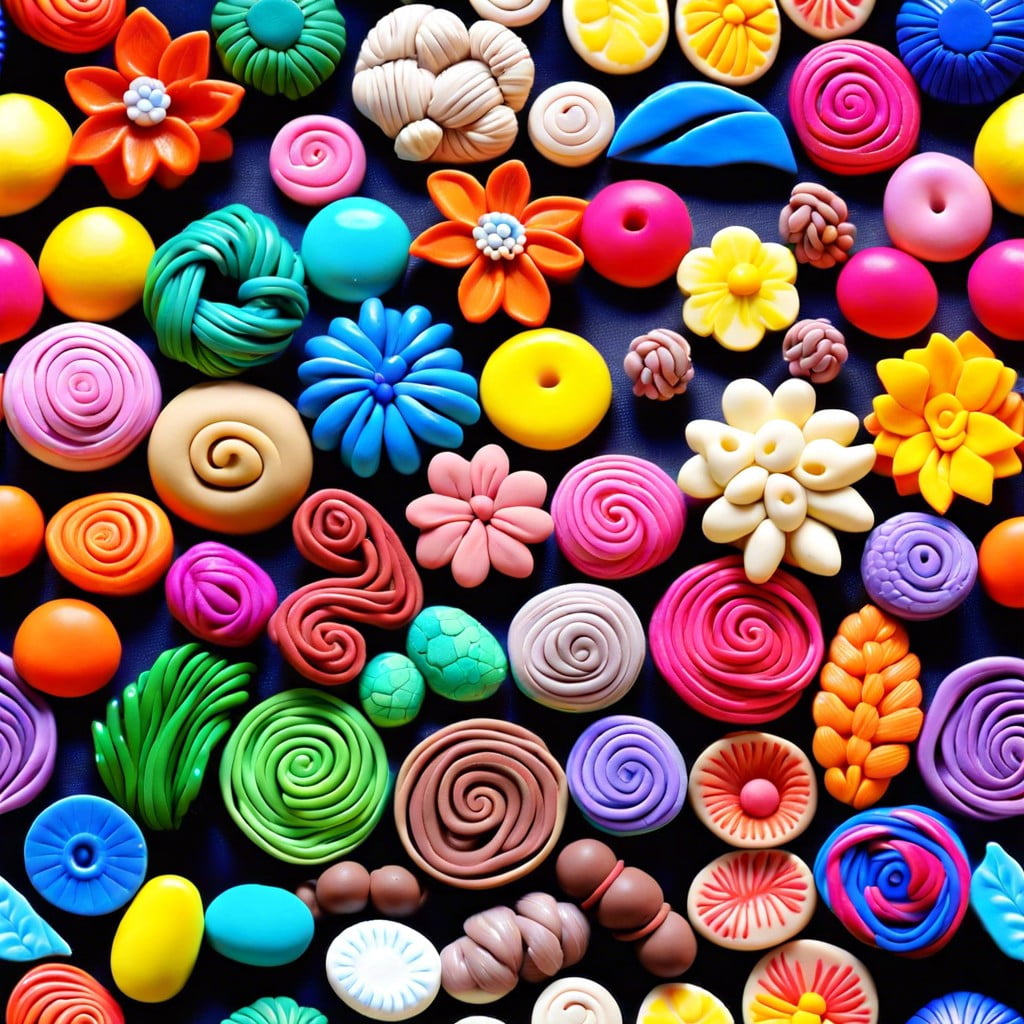
Sculpey Original is renowned for its softness and ease of manipulation, making it ideal for beginners. Super Sculpey, with a firmer texture, is preferred for intricate sculptural work, providing fine detailing capabilities. Sculpey III offers a wide color palette, though it’s less durable than other variations, it’s excellent for small decorative items.
Souffle by Sculpey boasts a lightweight, suede-like finish and is suitable for jewelry making due to its strength and ability to hold fine detail.
Premo by Sculpey is known for its flexibility and strength after baking, which works wonderfully for items needing a bit more durability. FIMO’s range – Classic, Professional, and Soft – varies in firmness and workability, but all maintain vibrant colors after curing. Kato Polyclay is recognized for maintaining its shape at higher temperatures, making it a go-to for techniques requiring multiple bakes.
Pardo Polymer Clay is distinguished by its high-quality pigments and translucency, ideal for artists seeking a more glass-like aesthetic. Cernit Polymer Clay, with a porcelain-like finish, lends itself to creations that need a smooth and delicate appearance. Papa’s Clay stands out with its non-stickiness and remarkable strength when baked, compatible with multiple crafting applications. Each brand and type brings unique qualities to the table, allowing for a broad range of artistic expressions.
Sculpey Original
Sculpey Original is a versatile and user-friendly option within the polymer clay family. It is soft and pliable, which makes it easy for beginners to handle. Shaping and blending colors with this clay is hassle-free due to its smooth texture. As a widely available choice, it suits a variety of projects from figurines to decorative items.
Key points about Sculpey Original:
- Ideal for basic modeling projects, offering a good balance of strength and malleability after baking.
- It has a matte finish once cured, which can be sanded or painted for a customized look.
- Can be baked in a home oven at recommended temperatures, usually around 275°F (135°C) for 15 minutes per quarter inch of thickness.
- Available in white and terracotta colors, which can be painted after baking for intricate designs.
- Given its softness, it may not be the best option for thin or delicate pieces that require more rigidity.
- It provides an economical choice for large projects or classroom settings where bulk material is beneficial.
Super Sculpey
Super Sculpey stands out with its remarkable fine-detailing capabilities, favored by professional sculptors for its semi-translucent beige finish that closely resembles ceramic after baking.
Its firm texture holds intricate details well, which is ideal for creating lifelike figures and dolls.
Despite its sturdiness, this polymer clay remains pliable enough to blend smoothly, minimizing the visibility of joins and seams in your creations.
Due to its composition, Super Sculpey requires a bit more conditioning to reach optimal malleability compared to its softer counterparts.
Once properly conditioned, it maintains its shape during the sculpting process, reducing distortion risks.
When it comes to baking, it’s responsive to the recommended temperature range of 275°F (135°C), solidifying to a durable finish within 15-30 minutes, depending on the size of the piece.
Post-baking, the material can be sanded, carved, or painted, allowing further customization and refinement of your art piece.
Crafters who require a sturdy medium for detailed projects will find Super Sculpey to be an invaluable tool, offering a blend of professional quality and versatility.
Sculpey III
Sculpey III is renowned for its softness and ease of conditioning, which makes it a favorite among beginners. Its vibrant color selection stands out, providing artists with a wide spectrum to fuel their creativity.
This clay remains smooth and pliable during the shaping process, transforming ideas into tangible art effortlessly. It’s worth noting that while Sculpey III is perfect for detailed figurines and decorative items, it may not be the best choice for items requiring high strength and durability after baking.
It is ideal for projects that won’t be subjected to a lot of handling or wear and tear. Keep in mind that Sculpey III, due to its softness, may be more prone to fingerprints and can become sticky in warm conditions. It is also a fantastic medium for crafting with kids due to its ease of use.
Souffle By Sculpey
Souffle by Sculpey presents a unique polymer clay experience with its lightweight and suede-like finish. Ideal for jewelry making, this clay remains strong and flexible after baking, making it less prone to breakage compared to other clays. Its self-supporting properties allow for advanced techniques like mokume gane and caning with ease.
With a range of soft, matte colors, Souffle can be mixed to create custom hues and blends beautifully due to its pliable consistency. Despite its softer nature, it maintains its shape well, making it suitable for both beginners and experienced crafters seeking to explore new textures and applications in their creations.
Premo By Sculpey
Premo by Sculpey is favored among artists for its exceptional durability and flexibility, making it ideal for millefiori, caning, and jewelry projects.
This clay retains flexibility even after baking, reducing the likelihood of breakage on thin areas. Its firm texture provides fine detail without slumping during curing.
The color palette is extensive with vibrant options that remain true after baking. Additionally, Premo is conducive to color mixing, enabling the creation of custom shades with consistent results.
It conditions easily with minimal effort and doesn’t become overly sticky, offering a good balance for both beginners and experienced crafters.
While slightly more expensive than some other options, many find the quality justifies the cost.
FIMO (Classic, Professional, Soft)
FIMO offers a wide variety of clays that cater to different needs, each line with unique characteristics:
- FIMO Classic is known for its firmness, making it suitable for detailed work. It requires thorough conditioning, but it holds shapes well, ideal for intricate pieces.
- FIMO Professional is the next step up, designed for serious artists. Its formulation allows precise blending of colors and maintains crisp details, a major advantage for complex projects.
- FIMO Soft is user-friendly thanks to its pliability right out of the package. Great for beginners, it’s easier to shape and manipulate but might not be the best choice for very detailed work.
All FIMO clays are known for their vibrant colors and can be mixed to create custom hues. After baking, they become durable and have a matte finish, which can be sanded or polished for a high sheen. Remember, despite being versatile, each type brings something different to the table. When choosing a FIMO product, consider the level of detail and ease of use you require for your project.
Kato Polyclay
Kato Polyclay stands out for its firmness, making it a favorite among artists who craft detailed sculptures. Its formulation enables it to maintain sharp lines and fine details, which is especially beneficial for techniques like caning – a process of creating patterns or images in polymer clay.
Known for its durability, Kato Polyclay withstands the test of time by resisting breakage after curing. It often requires conditioning to become pliable, which can be done through hand-kneading or using a pasta machine. Once conditioned, its consistency is uniform, facilitating an even bake.
This clay has a slightly different baking temperature compared to other brands, typically cured at 300°F (150°C) for 30 minutes per 1/4 inch (6mm) of thickness. This higher temperature helps it achieve its renowned strength.
The color selection for Kato Polyclay is more limited, but the available hues are vibrant and can be mixed to create custom shades. After curing, colors remain true and show minimal darkening.
When transitioning from another brand to Kato, artists may experience a learning curve due to its unique handling properties. However, many find the results worth the adjustment for projects that require enduring resilience and precision.
Pardo (Polymer Clay)
Pardo Polymer Clay differentiates itself with its beeswax component, providing a unique finish and texture. It’s particularly noted for its high translucency, making it a favored choice for artists looking to create realistic gemstone effects or delicate translucent works.
Here are key points to note about Pardo:
- Natural Ingredients: The inclusion of beeswax and premium pigments contributes to its reputation for quality and environmental consciousness.
- Translucency: This characteristic is a standout feature, offering exceptional clarity and depth of color for specialized projects.
- Strength: When cured, Pardo maintains a durable, flexible finish, which is less prone to breakage compared to some other brands.
- Colors: Offers a rich palette, including a variety of metallic hues that can be mixed to create custom shades.
- Conditioning: It’s firmer than many other polymer clays, so it may require more conditioning to become pliable. However, this also means it can hold fine details well.
- Baking: Cures at a similar temperature as other polymer clays, typically around 120°C (248°F) for 30 minutes, depending on the thickness of the piece.
Artists often regard Pardo as a high-end option within the polymer clay market due to these distinct properties, and it’s especially favored for applications where translucency or a natural finish is desired.
Cernit Polymer Clay
Cernit has a reputation for its porcelain-like finish, which appeals especially to doll makers and artisans creating fine details in their work. This Belgian-made clay remains flexible and strong post-baking, rarely exhibiting brittleness. It’s an excellent choice for projects requiring a smooth, elegant appearance.
The line includes a range of colors, with the “Number One” series known for its vibrant hues. These colors can be mixed to create custom palettes, which is particularly useful for nuanced craft projects. Due to its slightly translucent quality, Cernit also offers a unique line called “Translucent” which, when baked, achieves a glass-like clarity.
Since it can be firmer than other clays, conditioning Cernit might take a little more effort, but the results are worth it for the durability and finish achieved. Its firmness also assists in holding fine details which won’t slump during baking.
A key tip for working with this clay is to warm it in your hands or consider a brief stint with a conditioning machine. Once pliable, Cernit shapes smoothly, allowing for precision in creative works.
When using Cernit, always follow the specific baking instructions to prevent discoloration or burning, ensuring the desired high-quality outcome.
Papa’s Clay
Papa’s Clay stands out in the polymer clay market for its strength and flexibility, which remains even after baking. This makes it an excellent choice for artists who need their creations to withstand handling or for wearable art like jewelry.
Resilience: It is often praised for being one of the strongest clays post-baking, suitable for thin creations like petals and wings.
Vibrant Pigmentation: Provides an array of bright, highly pigmented colors that maintain their vibrancy after curing.
Bake Temperature: It can be baked at a lower temperature compared to some other brands, reducing the risk of burning or adverse reactions during the curing process.
Conditioning: Unlike some firmer clays, Papa’s Clay is relatively soft out of the package, making it easy to condition and blend without the need for excessive kneading.
For those looking to create delicate objects or wanting to ensure the longevity of their pieces, Papa’s Clay could be a valuable addition to your crafting materials.
Properties of Polymer Clay
Polymer clay’s malleability before curing allows artists to shape and mold it with ease, making it fantastic for detailed work. However, different brands vary in softness and workability straight from the package, with some requiring more conditioning than others.
Once baked, the durability of polymer clay is notable—resistant to breakage and maintaining vibrant colors even with long-term exposure to light. This permanence is ideal for creating lasting pieces, from beads to intricate sculptures.
The range of colors available is extensive. Many brands offer a spectrum from bright hues to pastels, as well as metallics and translucent varieties. Artists can also mix colors to achieve custom shades, providing endless creative possibilities.
Keep in mind each brand’s properties to find your perfect match for a particular project, whether it requires firmness for sculpting or a softer clay for delicate patterns.
Malleability
The ease of shaping polymer clay is crucial for both beginners and seasoned artists. A softer clay will be more pliable straight from the package, perfect for quick projects and those with less hand strength. Harder clays may require a bit of conditioning to become pliable but often hold fine details better and may suit intricate work.
Remember:
- Conditioning can involve kneading by hand or using a pasta machine.
- Warmer environments can make the clay more malleable.
- Mix different brands to tailor the consistency to your preference.
- Using a dedicated clay softener can restore or enhance pliability in clays that have become firm.
Whether you’re creating delicate jewelry or robust sculptures, finding a clay that’s easy to manipulate while retaining its shape during the creative process is a cornerstone of an enjoyable crafting experience.
Durability After Baking
The resilience of polymer clay post-curing is a crucial quality influencing the longevity of your creations. Upon proper baking, the material should be strong and, depending on the brand, even somewhat flexible.
Here are a few pointers to keep in mind:
- Thickness and Size: Thinner pieces are more prone to breakage; design your projects with enough thickness for added strength.
- Brand Specifics: Some brands are known for their strength after baking, such as Kato Polyclay and FIMO Professional, which cater to artists in need of sturdy finished pieces.
- Proper Baking: Underbaking leads to brittle results, while overbaking may darken or burn the clay. Follow brand-specific instructions for temperature and time to ensure optimal durability.
- Post-Baking Treatments: Adding varnish or using other sealants can provide extra protection and sturdiness to your piece.
- Test for Yourself: Experiment with small samples to determine the strength of different brands after baking. This hands-on approach can help you find the perfect clay for your projects.
Color Range
The spectrum of hues available in polymer clay is vast, allowing for boundless creativity. Brands offer a palette of colors from bright primaries to soft pastels and complex metallics.
Some points to consider about color range include:
- Pre-mixed shades save time and ensure color consistency for large projects.
- Custom colors can be created by mixing different hues, expanding artistic possibilities.
- Certain types, like FIMO and Premo, boast highly pigmented options that retain vibrancy after baking.
- Some clays, such as Souffle, offer a matte finish, while others provide a more satin look.
- Special effect clays with glitter, translucency, or faux stone textures cater to specific design needs.
Understanding the color choices helps in planning out projects and ensuring the envisioned outcome. Keep in mind that some colors may darken slightly when cured, so experimenting and testing before starting a significant piece is always good practice.
Specialty Uses of Polymer Clays
Polymer clay caters to various creative projects, each requiring specific characteristics. For sculptors, a firm clay like Super Sculpey or FIMO Professional is ideal. These clays hold fine details well and offer a sturdy finished piece, which is crucial for intricate work.
Jewelry artists often prefer clays with high strength after baking and vibrant colors. Premo by Sculpey and FIMO Soft are popular choices here. They’re durable enough to withstand wear and offer a wide color palette for unique designs.
Some clays, such as Sculpey Souffle, are lightweight with a suede-like finish, making them perfect for large beads or earrings that won’t weigh down the wearer. Translucent polymer clays, like Cernit or Pardo, allow for the creation of glass-like effects and can be mixed with other colors to achieve a variety of tones.
For those looking to mimic the look of gemstones or metallic finishes, clays like Kato Polyclay and Papa’s Clay have formulations that can be polished to a high shine or incorporate mica powders for a shimmering effect.
It’s important to consider the end use of your creation when selecting a polymer clay to ensure it aligns with the required properties for your specific application.
For Sculpting
Sculpting with polymer clay is a popular choice due to its versatility and the level of detail it allows. When creating figurines, intricate designs, or miniature models, certain clays are more suitable:
Super Sculpey and Sculpey Firm: Preferred for their fine detailing capabilities, these clays hold crisp lines and are good for intricate work. Their firmness reduces distortion during the sculpting process.
FIMO Professional: This line is designed for precision and has a firmer texture, which is excellent for maintaining shape and adding fine details. It’s a top choice for professional sculptors.
Kato Polyclay: Known for its strength after baking, it’s a viable option for delicate pieces that require a more durable finish.
Cernit: Its porcelain-like finish is ideal for doll-making, offering a high-end look to finished pieces.
Papa’s Clay: Boasts high elasticity, great for thin parts and maintains sharp detail very well.
When sculpting, consider the clay’s ability to blend seamlessly, how well it can be carved, and how it holds up during the baking process. Choose a clay that complements your technique – firmer clays for detailed work and softer ones for general modeling.
For Jewelry
Crafting jewelry with polymer clay opens up a world of creative possibilities, from beads to pendants. The ideal clay for this art form should offer a fine balance between strength and flexibility, ensuring the longevity of the pieces without compromising on intricate detailing.
Premo by Sculpey and FIMO Professional are top choices for their firmness and ability to hold minute textures, necessary for jewelry that often features delicate patterns. The extensive palette available with Premo and FIMO Soft also allows for color blending, giving artisans the freedom to match hues with precision.
Lightweight options like Sculpey Souffle are suitable for larger pieces where less heft is desirable. Finish is another critical aspect; brands like Pardo boast a natural translucence, perfect for gems and stones imitation. Remember, curing your jewelry at the recommended temperature helps to solidify its structure, offering resilience against breakage and surface wear.
Baking Polymer Clay
Achieving the perfect finish for your polymer clay creations hinges on proper baking. Here are key points to help you during this process:
- Follow the manufacturer’s instructions for temperature and time, as these can vary between brands and types of clay.
- Use an oven thermometer to ensure your oven’s temperature is accurate. Ovens can fluctuate and might not match the dial or digital reading.
- Place your project on parchment paper or a ceramic tile to avoid direct contact with the oven rack, which can cause heat spikes.
- Tent your items with aluminum foil to protect them from browning or burning, especially for pieces with protruding details.
- To maintain even baking, position your projects in the oven’s center and avoid overcrowding.
- Allow your items to cool slowly, as rapid temperature changes can lead to cracks.
- Baking too long can darken the clay, while under-baking may leave it brittle. A correctly baked piece should be somewhat flexible and durable when cool.
- Consider using a dedicated clay oven if you often work with polymer clay, to ensure consistency and avoid any potential food contamination.
By following these tips, you’ll enhance the longevity and quality of your polymer clay pieces, ensuring they are fully cured and ready for their intended use.
FAQ
Which is the best polymer clay?
The best polymer clay is Sculpey, recognized for its strength, attractive color variety, and ability to maintain sculpting lines, with added benefits like ease of use and reinforced strength compared to Sculpey III making it a preferred choice among artists.
Is Fimo better than Sculpey?
The appropriateness of Fimo versus Sculpey largely depends on the nature of the project, with Fimo Classic often being preferred for detailed figure sculpting due to its firmer consistency that aids in crafting petite details like facial features or hands.
What is the difference between polymer clay and Sculpey?
The difference between polymer clay and Sculpey lies in their hardening property; polymer clay hardens when baked, while Sculpey, a type of non-hardening clay, remains malleable even after multiple usages.
Which polymer clay is best for beginners?
The best polymer clays for beginners are Sculpey Bake Shop®, Sculpey III®, Original Sculpey® or Liquid Sculpey®.
How does the curing process vary between different types of polymer clays?
The curing process varies between different types of polymer clays primarily in the temperature and duration required, with some needing low temperatures around 230°F (110°C) and others requiring higher temperatures up to 325°F (163°C), while the timing can range from 15 minutes to several hours.
What characteristics should one consider when choosing a polymer clay for construction applications?
When choosing a polymer clay for construction applications, one should consider characteristics such as strength, structural integrity, weather resistance, cost, and the required curing process.
Can all types of polymer clay be used in both outdoor and indoor structures?
No, not all types of polymer clay are suitable for both outdoor and indoor structures due to variations in their durability and resistance to weather conditions.
Related reading:
